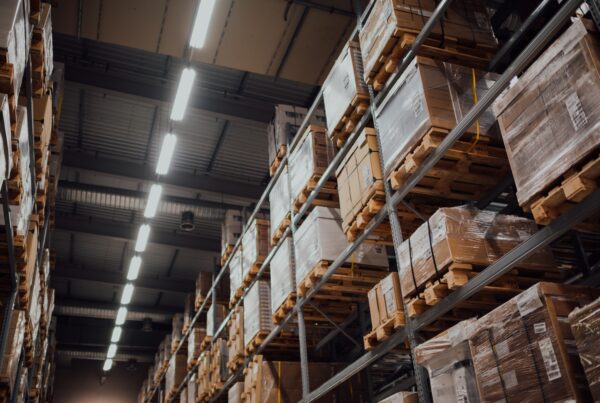From unmanned mobile robots in warehouses to drones for online shipping, supply chains are undergoing a major transformation - changing the nature of the logistics industry.
Warehousing1 presents five new technologies that could significantly change the logistics industry in the future.
1 Artificial Intelligence
The use of artificial intelligence in the logistics industry is very diverse. Development is currently focusing particularly on logistics service providers of the "last mile", i.e. delivery services on the last step to the customer. AI would enable vehicles, for example, to learn by themselves, as they could structure their environment, react to road traffic and calculate efficient routes. AI is also used in self-controlling logistics systems. At Warehousing1 we already rely on the use of artificial intelligence to identify optimal logistics partners and locations for our customers and thus realize savings potential.
2 Digital Networking
The networking of man, computer and machine offers infinite potential - and we are currently only at the beginning. The constantly generated amount of data is being networked better and better in all areas, including logistics, and advantages are becoming more and more tangible. In principle, digital networking allows logistics data to be exchanged across borders, among other things to promote transparency in the supply chain. In addition, innovations such as cloud computing or autonomous systems are applied in logistics networks, for example in the form of anticipatory risk management.
3 Big Data
Big Data has revolutionised many business areas, including the logistics industry. Supply chains in particular are easily unbalanced, which can cause bottlenecks or delays. This is where Big Data comes into play in logistics, for example to optimise transport routes. Possible data sources that can be very useful for the logistics industry include
- Traditional company data from operational systems
- Traffic and weather data from sensors and monitors
- Vehicle diagnoses, driving patterns and location information
- Financial business forecasts
- Website browsing sample data
- Social media data
The data can also be used to develop customer-friendly applications, for example to create data transparency throughout the entire supply chain.
4 Robots and Drones
In the meantime, more and more fulfillment centers rely on the use of robotics. Automated machines support the sorting, picking and shipping of articles. Especially the integration of sensors, actuators (electromechanical drive elements) and algorithms opens up new perspectives for robotics in logistics. In addition to the robots already in use today, logistics drones are also under discussion. These should have the ability to deliver parcels within the shortest possible time, almost like an electronic postman. This is currently not yet permitted in Germany, but could have a lasting impact on the logistics sector.
At the same time, many logistics employees fear being replaced by the use of electronic facilitation measures. However, the trend is increasingly moving in the direction of using robotics and drones to support rather than replace them.
5 Blockchain
Blockchain technologies are increasingly used in the transport and logistics sector to achieve greater transparency and accountability. Concrete application examples can be found, for example, in the management and tracking of documents throughout the supply chain process. Increased and continuous transparency can, for this purpose, improve punctuality. This is because the desired visibility within a supply chain has not yet been achieved to one hundred percent. Furthermore, the use of blockchain technology offers the potential to generate new innovation channels for the development and use of logistics applications. For example, blockchain technology, in conjunction with existing software applications, could establish itself as a new operating system for supply chain networks.
Warehousing1 also relies on new technologies. By using AI-based software, we can identify the perfect fulfillment service provider from over 300 warehouse locations for our customers and make customized offers. The intelligent selection of the optimal warehouse locations and processes greatly increases savings potential, which can reduce costs by up to 50%. We would be happy to arrange an initial meeting today to discuss your logistics options.



